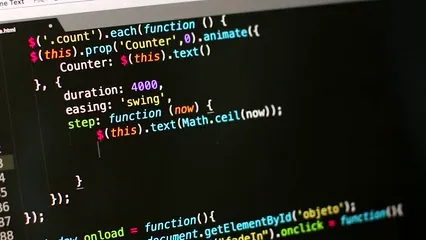Introduction
Navigating the world of data science can sometimes feel like trying to find a needle in a haystack, especially when it comes to coursework. One such course at Berkeley is Data 140, also known as Probability for Data Science. This course dives into the fascinating realm of probability theory and statistical methods. It’s a must for aspiring data scientists, but what if you haven’t tackled CS70 yet? No worries! This guide is here to help you make sense of it all. And while you’re at it, why not check out “Python Crash Course” by Eric Matthes? This book is a fantastic way to kickstart your coding journey!
Data 140 is designed for students who already have a solid foundation in mathematics. However, many students wonder if they can succeed in this course without the foundational knowledge provided by CS70, which covers discrete mathematics and probability theory. The answer is a resounding yes—though it might require a bit of extra effort.
Before you toss your hands up in despair, let’s break down how you can achieve success in Data 140. First, we’ll highlight the key topics covered in the course. Then, we’ll discuss the importance of CS70 and the foundational concepts it provides. Finally, we’ll outline strategies to fill any gaps in your knowledge and tackle the challenges you may face.
Succeeding in Data 140 without CS70 is not just a dream; it’s a real possibility! With the right approach and a sprinkle of determination, you can conquer this course. Let’s dive into the essential information you need to thrive in Data 140, paving your way for a successful career in data science. And if you’re looking for some great reading material, consider picking up “Introduction to Probability” by Dimitri P. Bertsekas and John N. Tsitsiklis.

Summary of Key Points
In this guide, we’ll cover the essentials of Data 140 and its relevance in the field of data science. We’ll begin by outlining the foundational topics that are crucial for understanding the course material, such as probability theory and statistical methods. These topics are not just academic exercises; they have real-world applications that every data scientist should be aware of. Speaking of applications, check out “Discrete Mathematics and Its Applications” by Kenneth H. Rosen to further bolster your understanding!
Next, we’ll examine the prerequisites for Data 140, particularly the significance of CS70. This course introduces critical concepts from discrete mathematics that many students find helpful when navigating Data 140. We’ll also discuss the feasibility of taking Data 140 without CS70, offering actionable strategies to bridge any knowledge gaps you may encounter along the way.
Moreover, we’ll address common challenges faced by students who enter Data 140 without the benefit of CS70. You’ll receive practical solutions to overcome these hurdles, ensuring you are well-prepared for this academic endeavor. By the end of this guide, you won’t just be informed—you’ll be armed with the tools necessary to excel in Data 140 and advance your data science career. Let’s get started! And for those who want to dive deeper into data analysis, grab a copy of “The Art of Statistics: Learning from Data” by David Spiegelhalter.

What Is Data 140?
Overview of Data 140
Data 140, also known as Probability for Data Science, is a crucial course in the realm of data science education. It dives deep into probability theory and statistical methods, equipping students with the skills to analyze and interpret data effectively. This course is particularly significant for those pursuing careers in data science, statistics, or related fields.
At the heart of Data 140 lies a strong emphasis on mathematical rigor. Students are not just asked to memorize formulas but are encouraged to understand the underlying principles that govern probability and statistics. This understanding is vital for applying these concepts to real-world problems, making the course both challenging and rewarding. And if you’re looking for a fun introduction to statistics, why not check out “Naked Statistics: Stripping the Dread from the Data” by Charles Wheelan? It’s a great way to demystify the subject!
Core topics in Data 140 include probability theory, where students learn about random variables, probability distributions, and expected values. These foundational concepts are essential for grasping more complex ideas later in the course. Additionally, statistical methods are explored in depth, showcasing how data can be manipulated and analyzed to derive meaningful insights.

The course also emphasizes practical applications in data science. Students engage with real datasets, applying theoretical concepts to analyze trends, make predictions, and inform decisions. This hands-on approach ensures that learners can translate their knowledge into practical skills, preparing them for future challenges in the data science landscape. For those interested in data science from scratch, consider reading “Data Science from Scratch: First Principles with Python” by Joel Grus.
Key Topics Covered in Data 140
Probability Theory: The backbone of Data 140 is probability theory. Here, students explore the intricacies of random variables and probability distributions. Understanding these concepts is crucial for anyone looking to navigate the complexities of data analysis.
Central Limit Theorem: This theorem is a cornerstone in statistics. It explains how, under certain conditions, the mean of a sample distribution will tend to be normally distributed, regardless of the original distribution’s shape. This concept is vital for making inferences about large datasets. Learn more about the importance of the Central Limit Theorem in statistics.
The Central Limit Theorem is a fundamental concept in statistics that plays a key role in Data 140. Explore its significance here.
Markov Chains and Law of Large Numbers: Markov Chains are used extensively in various applications, including natural language processing and predictive modeling. Meanwhile, the Law of Large Numbers reassures us that as we collect more data, our sample averages will converge to the expected value. Both topics are essential for understanding the behavior of complex systems and making informed predictions. If you’re looking for a deeper dive into statistics, consider “The Elements of Statistical Learning” by Trevor Hastie, Robert Tibshirani, and Jerome Friedman.
In summary, Data 140 offers a comprehensive foundation in probability and statistics, vital for aspiring data scientists. The combination of rigorous mathematical instruction and practical application ensures that students are well-equipped to tackle real-world data challenges. Whether you’re analyzing trends, making predictions, or simply trying to make sense of the numbers, Data 140 is your ticket to mastering the art of data science.

What Is CS70 and Why Is It Important?
Overview of CS70
CS70, or Discrete Mathematics and Probability Theory, is an essential course that lays the groundwork for many advanced topics in computer science and data science. It covers a variety of fundamental concepts, including combinatorics, graph theory, and modular arithmetic. These subjects not only enhance mathematical thinking but also provide critical analytical skills necessary for tackling complex problems.
Understanding CS70 is crucial for students aiming to excel in Data 140, as it introduces key concepts in probability and discrete mathematics. The course equips students with the tools to approach data science problems with confidence. Many concepts learned in CS70 appear in more advanced courses, making it a prerequisite that students should not overlook. If you’re looking for a good resource to aid your learning, check out “Statistics for Data Science” by James D. Miller.
CS70 also teaches students how to think logically and reason through problems systematically. This logical reasoning is invaluable when working with data and algorithms, ensuring that students can effectively analyze and interpret information.

Topics in CS70
Key topics in CS70 include combinatorics, which deals with counting and arranging objects. This area of study is essential for understanding probability. Graph theory, another significant topic, explores networks and relationships between data points. It’s particularly relevant in data science, where relationships and connections often hold the key to valuable insights. For those interested in a broader understanding of data structures, consider checking out “Practical Statistics for Data Scientists” by Peter Bruce and Andrew Bruce.
Additionally, modular arithmetic is covered, a concept widely used in computer science, particularly in cryptography and algorithm design. Basic probability concepts are also introduced, forming a solid foundation for the more complex ideas encountered in Data 140.
Overall, CS70 is a vital building block for any student pursuing a career in data science or related fields. It prepares students for the rigorous demands of Data 140 and beyond, ensuring they have the analytical tools necessary to succeed. By mastering the concepts in CS70, students can approach Data 140 with confidence and a strong mathematical foundation. And while you’re at it, consider picking up “Data Science for Dummies” by Anasse Bari, Dmitry Babenko, and John Paul Mueller for a fun and easy read!

Can You Take Data 140 Without CS70?
Overview of the Possibility
Yes, it is entirely possible to take Data 140 without CS70. Many students have successfully navigated this path. They’ve emerged victorious, often sharing positive experiences and inspiring stories. Imagine stepping into Data 140, armed with determination and a sprinkle of self-study magic.
Students have reported that while lacking CS70 may seem daunting, it doesn’t have to be a dealbreaker. They’ve found that with the right mindset and preparation, success is within reach. Some even claim that tackling Data 140 without CS70 has sparked their curiosity, pushing them to learn independently.
However, it’s important to recognize that success varies. Each student’s experience is unique. Some may struggle initially, but many find their rhythm as they progress. Those who embrace the challenge often find it rewarding, turning potential obstacles into stepping stones. And if you’re looking for a great resource on deep learning, consider “Deep Learning” by Ian Goodfellow, Yoshua Bengio, and Aaron Courville.

Factors to Consider
While you can take Data 140 without CS70, be prepared to put in some extra effort. You’ll need to fill in knowledge gaps, especially regarding foundational concepts in probability and discrete mathematics. This means dedicating time to self-study and actively seeking out resources.
Utilizing textbooks, online courses, and tutorial videos can be a game plan. Many students have benefited from joining study groups, where collaboration can lead to breakthroughs. If you want a solid reference, check out “Machine Learning Yearning” by Andrew Ng to guide your learning!
In short, while it’s feasible to take Data 140 sans CS70, being proactive is key. Invest time in your studies, and don’t hesitate to reach out for help. The journey might be bumpy, but the destination can be well worth the ride.

Challenges of Data 140 Without CS70
Common Challenges
One of the significant challenges faced by students without CS70 is the lack of a solid mathematical foundation. Many find themselves grappling with abstract concepts that can feel like trying to catch smoke with bare hands. Advanced probability topics can become particularly tricky, leaving some students feeling lost in a sea of equations.
Additionally, the complexity of the material can lead to increased study time. For those without a CS70 background, it might feel like climbing a steep hill without hiking boots. The extra effort required can be daunting, but it’s not insurmountable. And to make studying a bit more enjoyable, consider investing in noise-canceling headphones for those focused study sessions!

Strategies to Overcome Challenges
To tackle these challenges head-on, it’s crucial to emphasize the importance of foundational knowledge. Brush up on the basics of discrete mathematics and probability theory. This foundational knowledge is akin to having a sturdy map while wandering through the wilderness of Data 140.
Supplementary resources can be a lifesaver. Consider online platforms like Khan Academy or Coursera for additional tutorials. These resources often break down complex concepts into digestible pieces. If you’re looking for a good textbook, check out “Probability and Statistics for Engineering and Science” by Jay L. Devore.
Furthermore, don’t underestimate the power of collaboration. Form study groups with peers who have taken CS70 or are in the same boat. Together, you can decipher difficult topics and support one another through the learning process.

In conclusion, while taking Data 140 without CS70 presents challenges, a proactive approach can turn those challenges into triumphs. With determination, resourcefulness, and a dash of humor, you can conquer Data 140 and set the stage for a successful data science career. And while you’re at it, consider a desk lamp to illuminate your late-night study sessions!

How to Prepare for Data 140 Without CS70
Preparation Steps
1. Review Discrete Mathematics
Before diving into Data 140, it’s essential to brush up on discrete mathematics. This subject lays the groundwork for many key concepts in probability and statistics. Focus on areas like sets, functions, combinatorics, and graph theory. Understanding these topics will give you a solid base to tackle more complex material in Data 140. If you’re looking for a good set of colored pens for note-taking, check out this set of colored pens!
Sets and functions are fundamental concepts that you’ll encounter frequently. Combinatorics will help you grasp the counting methods often used in probability. Graph theory, while it may sound intimidating, can simplify many data relationships. You’ll find that a bit of pre-course study in these areas can make a world of difference.

2. Strengthen Your Understanding of Basic Probability
Probability is the heartbeat of Data 140. Therefore, it’s crucial to nail down basic probability concepts. Start with independent events and conditional probability. These ideas are essential for understanding how different data points interact.
Don’t forget about random variables! Distinguishing between discrete and continuous random variables will be key for later topics. Familiarize yourself with probability distributions, as they’ll come up often in your coursework. Working through problems and applying these concepts will boost your confidence. And if you want to take your studies to the next level, consider a subscription to Scientific American magazine!

3. Familiarize Yourself with Python for Data Science
Python is the go-to language for data science, and knowing its essentials will make your journey smoother. Begin by learning about the key libraries: NumPy, Pandas, and SciPy. These libraries provide powerful tools for data manipulation and analysis.
Visualization tools like Matplotlib will also be invaluable. They help you present your findings effectively, making it easier to communicate complex ideas. Consider completing online tutorials or projects to sharpen your coding skills. Building small projects can be a fun way to solidify what you’ve learned. And if you’re looking for a great reference book, check out “Python for Data Analysis” by Wes McKinney.

4. Take Advantage of Office Hours and Study Groups
Never underestimate the power of collaboration! Office hours and study groups can be your secret weapons. Professors and teaching assistants are there to help. They can clarify concepts that might seem murky after reading the textbook. Don’t hesitate to ask questions; it shows initiative and a willingness to learn.
Joining or forming study groups with classmates offers additional support. You can share insights, tackle difficult homework problems together, and motivate each other. Engaging in discussions can deepen your understanding of the material. Plus, it can turn studying from a solitary endeavor into a fun and interactive experience. And for those late-night study sessions, don’t forget to stay hydrated with a trusty water bottle!

Benefits of Taking Data 140 Without CS70
1. Time-Saving
Taking Data 140 without CS70 allows you to accelerate your academic journey. You skip the prerequisite, diving straight into the heart of data science. This can free up time for other courses, internships, or projects that enhance your learning experience.
2. Focused Learning
Without the CS70 detour, you can concentrate on material directly relevant to data science. This focused approach can make your studies feel more purposeful. You’ll be learning what truly matters for your future career, rather than wading through courses that might not align with your goals.
3. Developing Self-Learning Skills
Tackling Data 140 without CS70 fosters independent learning. You’ll develop problem-solving skills and the ability to seek out information effectively. These are invaluable traits in the data science field, where continuous learning is essential. Embracing this challenge can help you become a more resourceful and resilient learner. And to keep your mind sharp, consider grabbing a puzzle book for mental breaks!
In summary, preparing for Data 140 without CS70 is entirely achievable with the right strategies. By reviewing discrete mathematics, strengthening your probability knowledge, familiarizing yourself with Python, and utilizing available resources, you can set yourself up for success. The benefits of this path, including time-saving and focused learning, make it an exciting opportunity for those ready to take on the challenge.
Common Challenges and How to Overcome Them
Addressing Specific Challenges
1. Advanced Probability Concepts:
Advanced probability topics can appear daunting without a solid foundation. Understanding random variables, distributions, and the Central Limit Theorem is critical to succeeding in Data 140. Start by revisiting basic probability. Use online resources such as Khan Academy or Coursera. These platforms offer concise explanations and examples that simplify complex ideas. You might even discover that what seems tough now will become second nature with practice. And for a deeper dive into statistics, grab a copy of “Think Stats: Exploratory Data Analysis” by Allen B. Downey.
Additionally, consider forming study groups. Collaborating with classmates can demystify challenging concepts. Explaining topics to each other not only reinforces your understanding but also makes learning more enjoyable. Remember, it’s okay to ask for help—everyone starts somewhere!
2. Time Management:
Time management is crucial, especially when you’re tackling a course as rigorous as Data 140. Without CS70, you may need extra time to fill in gaps in your knowledge. Create a structured study plan that breaks down your syllabus into manageable chunks. Allocate specific times each week for reviewing topics, completing assignments, and preparing for exams.
Utilize tools like calendars or apps to keep track of deadlines and study sessions. Prioritize your tasks by focusing on the most challenging areas first. This way, you can tackle them while your mind is fresh. And don’t forget to schedule breaks! Overloading yourself can lead to burnout—balance is key. To help with that, you might find a planner or organizer handy!

3. Programming Struggles:
Programming can be a significant hurdle for students without a strong background in computer science. Data 140 uses Python extensively, so it’s essential to get comfortable with the language. Regular practice is your best friend here. Set aside time each week to work on Python exercises. Websites like Codecademy and LeetCode offer interactive coding challenges that can sharpen your skills.
Don’t hesitate to seek out online communities or forums. Websites like Stack Overflow or Reddit can connect you with fellow students and experienced programmers. Engaging in discussions can provide valuable insights and solutions to common problems. Remember, the more you practice, the more confident you’ll become in your programming abilities! And for those interested in data visualization, a mini projector can be a fun tool to showcase your findings!

By addressing these challenges with determination and the right strategies, you can successfully navigate Data 140 without the CS70 prerequisite. Embrace the journey, and watch as you transform these obstacles into stepping stones toward your success.
Conclusion
Taking Data 140 without CS70 presents unique challenges, but with the right preparation and mindset, it is entirely possible to succeed. By focusing on foundational concepts, enhancing programming skills, and leveraging available resources, students can navigate this rigorous course effectively. Embrace the journey ahead, and remember that every challenge is an opportunity for growth in your data science career. And if you’re looking for some light reading to unwind, consider a board game to socialize and unwind!
Stay curious, keep learning, and don’t shy away from seeking help when needed. With perseverance and a sprinkle of humor, you’ll not only survive Data 140 but thrive in it. The world of data science is waiting for you, so gear up and get ready to make your mark!
FAQs
Is it worth taking Data 140 without CS70?
Yes, it can be worth it! Many students find that the experience challenges them and helps them grow. However, it requires dedication and self-study.
What resources are available for self-study?
Websites like Khan Academy, Coursera, and textbooks recommended in the course syllabus are excellent starting points. Consider online forums for additional support.
How can I connect with peers who have taken Data 140?
Look for study groups through your university or online communities. Social media platforms like Facebook and Discord often have groups for students.
What should I do if I struggle during the course?
Don’t hesitate to reach out for help! Utilize office hours, ask questions in class, and communicate with your instructors. They’re there to support you.
Please let us know what you think about our content by leaving a comment down below!
Thank you for reading till here 🙂
All images from Pexels




